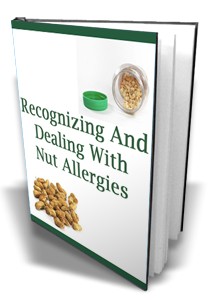 License Type: Master Resell Rights
License Type: Master Resell Rights  File Size: 2,611 KB
File Size: 2,611 KB File Type: ZIP
File Type: ZIP
 SKU: 1771
SKU: 1771  Shipping: Online Download
Shipping: Online Download
Ebook Sample Content Preview:
Most allergies begin in childhood, and that is therefore the most likely time for a peanut allergy (or, indeed, any other kind of food allergy) to impinge on your life.
However, once they understand that they have a peanut allergy, and that eating peanuts will be both unpleasant and potentially harmful, most children are good at avoiding doing so.
However, the same cannot always be said of adults, especially those who are not the parents of the children in question.
This is partially because many people never give a moment’s thought to the possibility of other people’s children having allergies, and partially because those children are often very shy about talking to adults who are not their parents. While they might, therefore, be able to tell that adult that they cannot eat peanuts or any foodstuffs that contain peanut proteins, their natural shyness might prevent them from doing so.
While the situation is undoubtedly improving, it is still true that not every food that contains traces of peanut proteins will be marked as such. For example, in the last section we saw how foodstuffs might be contaminated with these proteins by cross contact, and that is something that no-one, adult or child, could be expected to anticipate.
Whatever the reason, mistakes will be made from time to time.
However, it seems that most pre-teenage children are far more able to survive allergic reactions than they might be later in life. This is true even of children who have suffered allergic anaphylaxis or even an anaphylactic shock.
For example, it is known that young children who have suffered anaphylaxis as a result of a bee or wasp sting are likely to suffer a far less severe reaction than a teenager or young adult who has been injected with exactly the same amount of venom by the insect.
It is for this reason that the biggest risk period for people suffering from a peanut allergy tends to be the years when they are a teenager or young adult.
For some reason, during these years, the severity of the allergic reaction suffered seems to increase. At the same time, because they are becoming more independent and less under the control of their parents, these are also the years when they are far more likely to eat peanuts or peanut-based products in order to ‘test’ whether they are still allergic.
- File Size:2,611 KB
- License: Master Resell Rights
- Category:Ebooks
- Tags:2008 Ebooks Master Resale Rights








